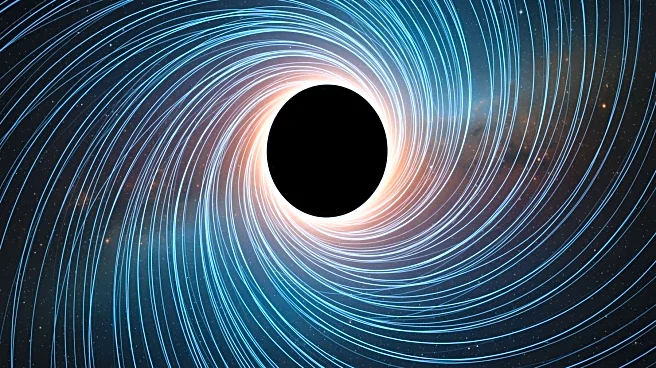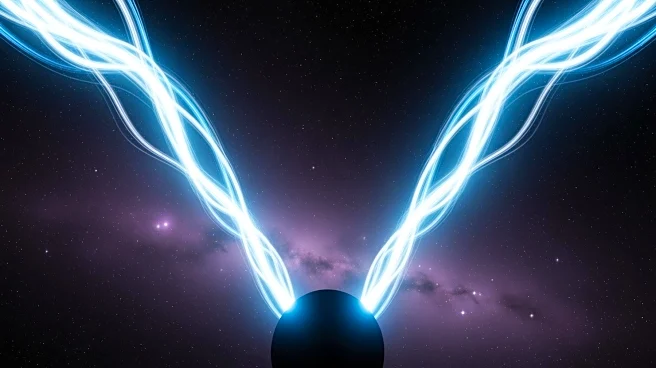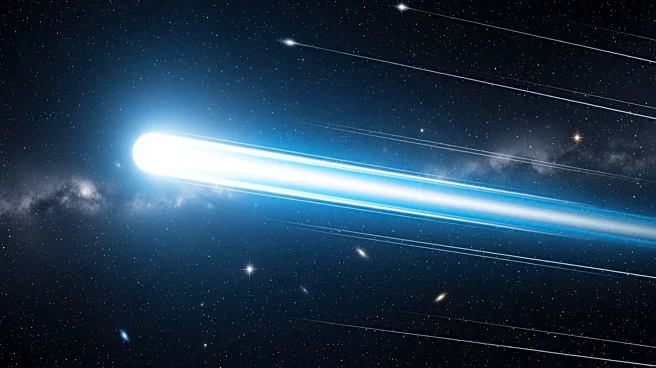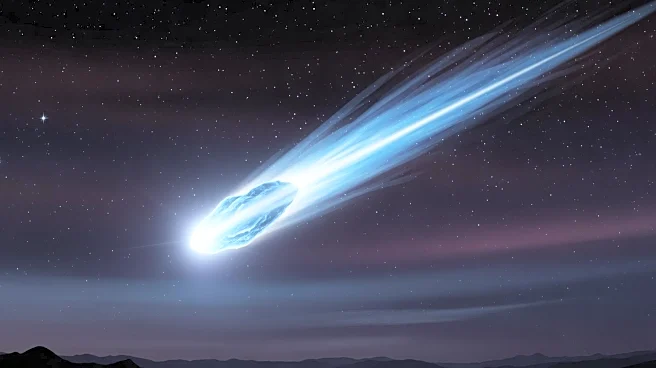What's Happening?
The Event Horizon Telescope Collaboration has released new images showing changes in the polarization pattern around M87*, the first black hole ever photographed. These changes, observed over four years,
indicate shifts in the magnetic fields and a dynamic flow of gas near the event horizon. The research, conducted by a global team using a planet-scale network of radio telescopes, suggests a turbulent accretion flow with gas spiraling inward under gravity. The polarization pattern, which flipped direction from 2017 to 2021, was unexpected and hints at changes in the direction of the electric field tied to the radiation. This phenomenon may be influenced by a magnetically arrested disk, which can cause variability in the flow of gas.
Why It's Important?
The findings from the Event Horizon Telescope are significant as they provide insights into the behavior of magnetic fields around black holes, which play a crucial role in steering charged particles and regulating the flow of matter. Understanding these dynamics is essential for comprehending how black holes interact with their surroundings and influence galaxy formation. The changes in M87*'s magnetic fields could impact the relativistic jet emitted by the black hole, which carries energy into the galaxy and affects star formation. This research contributes to the broader understanding of black hole physics and the role of magnetic fields in cosmic phenomena.
What's Next?
Future research will focus on higher-frequency campaigns and adding more stations to the telescope array, which could provide more detailed observations and help trace the cause and effect of the magnetic field changes. Scientists aim to determine whether the polarization flip is a recurring event or a transient change in the foreground. Additionally, they plan to investigate how the jet base brightens or fades as the ring rearranges. These efforts will enhance the understanding of black hole dynamics and the influence of magnetic fields on accretion flows.
Beyond the Headlines
The study of M87* offers a glimpse into the complex interactions between magnetic fields and accretion flows near black holes. The observed changes in polarization could be due to various factors, including Faraday rotation or synchrotron emission. Each scenario presents different implications for the understanding of black hole environments. The research underscores the importance of reliable imaging techniques and the need for continuous observation to capture transient phenomena in the universe.











